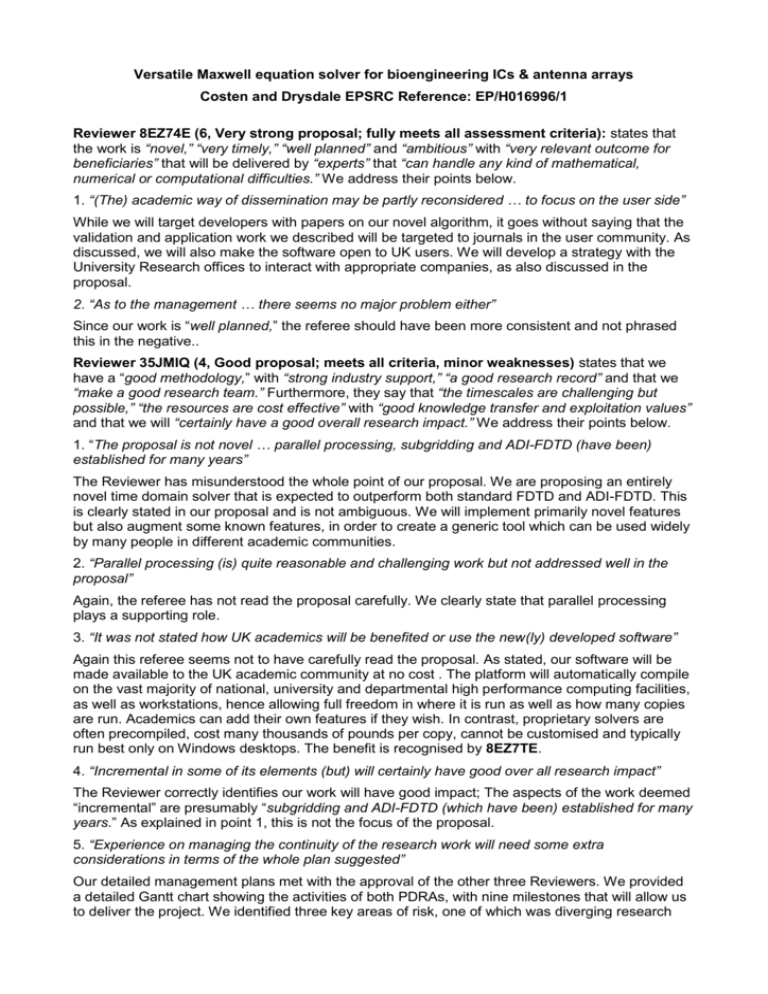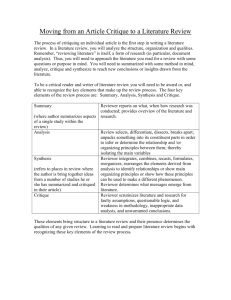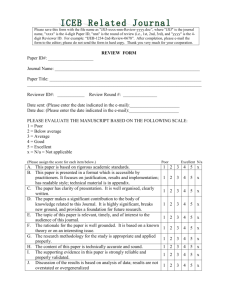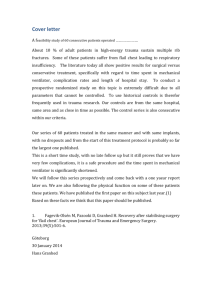Versatile Maxwell equation solver for bioengineering ICs & antenna
advertisement

Versatile Maxwell equation solver for bioengineering ICs & antenna arrays Costen and Drysdale EPSRC Reference: EP/H016996/1 Reviewer 8EZ74E (6, Very strong proposal; fully meets all assessment criteria): states that the work is “novel,” “very timely,” “well planned” and “ambitious” with “very relevant outcome for beneficiaries” that will be delivered by “experts” that “can handle any kind of mathematical, numerical or computational difficulties.” We address their points below. 1. “(The) academic way of dissemination may be partly reconsidered … to focus on the user side” While we will target developers with papers on our novel algorithm, it goes without saying that the validation and application work we described will be targeted to journals in the user community. As discussed, we will also make the software open to UK users. We will develop a strategy with the University Research offices to interact with appropriate companies, as also discussed in the proposal. 2. “As to the management … there seems no major problem either” Since our work is “well planned,” the referee should have been more consistent and not phrased this in the negative.. Reviewer 35JMIQ (4, Good proposal; meets all criteria, minor weaknesses) states that we have a “good methodology,” with “strong industry support,” “a good research record” and that we “make a good research team.” Furthermore, they say that “the timescales are challenging but possible,” “the resources are cost effective” with “good knowledge transfer and exploitation values” and that we will “certainly have a good overall research impact.” We address their points below. 1. “The proposal is not novel … parallel processing, subgridding and ADI-FDTD (have been) established for many years” The Reviewer has misunderstood the whole point of our proposal. We are proposing an entirely novel time domain solver that is expected to outperform both standard FDTD and ADI-FDTD. This is clearly stated in our proposal and is not ambiguous. We will implement primarily novel features but also augment some known features, in order to create a generic tool which can be used widely by many people in different academic communities. 2. “Parallel processing (is) quite reasonable and challenging work but not addressed well in the proposal” Again, the referee has not read the proposal carefully. We clearly state that parallel processing plays a supporting role. 3. “It was not stated how UK academics will be benefited or use the new(ly) developed software” Again this referee seems not to have carefully read the proposal. As stated, our software will be made available to the UK academic community at no cost . The platform will automatically compile on the vast majority of national, university and departmental high performance computing facilities, as well as workstations, hence allowing full freedom in where it is run as well as how many copies are run. Academics can add their own features if they wish. In contrast, proprietary solvers are often precompiled, cost many thousands of pounds per copy, cannot be customised and typically run best only on Windows desktops. The benefit is recognised by 8EZ7TE. 4. “Incremental in some of its elements (but) will certainly have good over all research impact” The Reviewer correctly identifies our work will have good impact; The aspects of the work deemed “incremental” are presumably “subgridding and ADI-FDTD (which have been) established for many years.” As explained in point 1, this is not the focus of the proposal. 5. “Experience on managing the continuity of the research work will need some extra considerations in terms of the whole plan suggested” Our detailed management plans met with the approval of the other three Reviewers. We provided a detailed Gantt chart showing the activities of both PDRAs, with nine milestones that will allow us to deliver the project. We identified three key areas of risk, one of which was diverging research focus (i.e. continuity) and described our strategy for risk management. In addition to an IP agreement, we are already working with the Universities to develop a strategy for approaching other potential beneficiaries in the UK (e.g. Toumaz, Fujitsu) and internationally (Abbot, Cardinal Health, Intel, AMD). Reviewer TD8Y9G (2, Does not meet one or more criteria) states that we have identified a “good way to proceed,” in developing a “novel” solver;” there is “adventure” in our research and our dissemination will “definitely reach the right target,” “planning and management are satisfactory”. We address their points below. We feel strongly that there is an inconsistency between these statements and the final assessment that the referee has given (see Point 1, below). We are particularly concerned that this referee does not appear to have grasped technical details of the project, and in particular would refer the Assessment panel to Points 2 and 3, below. 1. Overall score of “2, Does not meet one or more criteria” The overall score is inconsistent with the scores in each category, all of which have been rated as “adequate” or better.. 2. “The proposal is to develop (a solver) with non-frequency dependent media” The reviewer has misunderstood the proposal. We clearly state, in an unambiguous manner in section three that we are working on frequency dependent solutions. Note, Section Three of our Programme and Methodology is headed “Frequency Dependent Materials” and fully specifies the approach we will take. 3. “The proposal is to develop a (solver) with a simple absorbing boundary condition” Again this is not true. Section Five of our Programme and Methodology is headed “Advanced boundary conditions” and clearly explains we will “reformulate” the “complex frequency shifted perfectly matched layer” boundary condition. This is an extremely complicated boundary condition both mathematically and in its implementation. 4. “Of a little incremental nature” The Reviewer acknowledges we propose a “novel” solver but having failed to fully understand the proposal (see Points 2 & 3) has overlooked the novel features we described in detail. See also reply to point one of 35MJIQ. 5. “The resources requested are not reasonable to the task” This comment is so short we cannot interpret it. The other Reviewers finds us cost effective. 6. “I do not find the proposed research work for support sufficiently convincing” The Reviewer’s conclusions are reached on the basis of factual errors that could have been avoided if the document had been read and reviewed, as written. The brevity of their comments reveals the level of their misunderstanding. We trust the Panel will contrast their comments and score with that of the other three Reviewers. Reviewer 5KYBMU (5, Strong proposal; broadly meets all criteria) states that we are addressing “two crucial problems” with a “new,” “highly ambitious” approach encompassing a “leading edge” methodology. The team is a “valuable partnership” that has already achieved “remarkable results.” The “management plans are outlined quite convincingly,” “the overall quality is tending to outstanding” and “success of this adventurous project will greatly transform computeraided design of electromagnetic systems both in the UK and globally.” We address their specific points below. 1. “Frequency dependent materials and small scatterers are objects of research in leading world groups and centres” The Reviewer is simply validating the importance of research in this area. In their words, we have an advantage because our methodology is “promising and currently considered as leading edge.” We have already identified and outlined a strategy for dealing with competitive developments in the risk management section. 2. “High calibre publications are almost entirely on the side of UoG” The Reviewer correctly points out that we have a large number of high calibre publications. In fact, the expertise in Glasgow is balanced and augmented by skills in the Manchester group, which is why this is such a strong collaborative team.







